The last thing I wanted to do was break my wife’s arm, but that’s what happened as I tried to get her through the narrow door of the plane’s lavatory. It wasn’t intentional of course, but there is not enough room inside for a helper and a disabled person to be in the lavatory at the same time. So rather than stepping in first and safely pulling her in, I tried to move her in backwards. That turned out to be a big mistake.
We learned the hard way. The lavatory door had the ’œwheelchair accessible’ symbol. One would have thought it would at least be safe, albeit inconveniently narrow. However, the little on-board wheelchair (a.k.a. aisle chair) wouldn’t fit through the lavatory door. What was to be a relaxing and fun vacation with friends in San Antonio became instead a five-day stay at a Texas hospital for my wife. We have learned that life with a disability means we continually make adjustments. Sometimes the best laid plans can go astray.
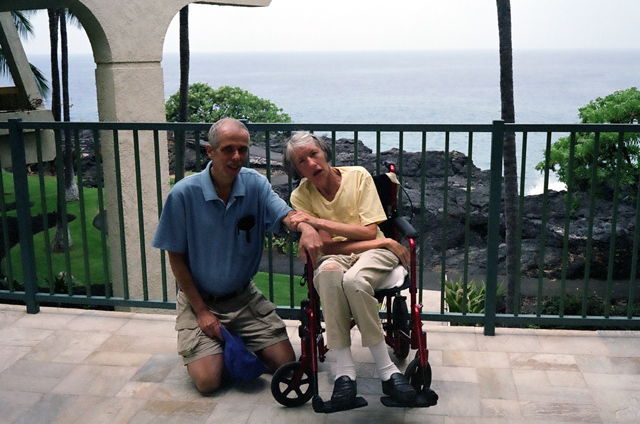
Mal and his wife Deborah find it challenging to fly on single-aisle aircraft – Photo: Malcolm Cumming
My wife, Deborah, and I have enjoyed traveling together over the last thirty years despite the fact that she has been using a wheelchair for two decades. Her 1983 diagnosis of multiple sclerosis (MS) has certainly presented ruts in the road, but we haven’t let it erase our love of travel or slow us down. We have traveled to Europe, Canada, Mexico, Hawaii, and many places in the U.S. Apart from needing someone to ’œtransfer’ her into and out of her wheelchair, disability travel, believe it or not, does have its advantages! We sail through TSA inspections without having to wait in a long line, for instance, and people in wheelchairs get to board first.
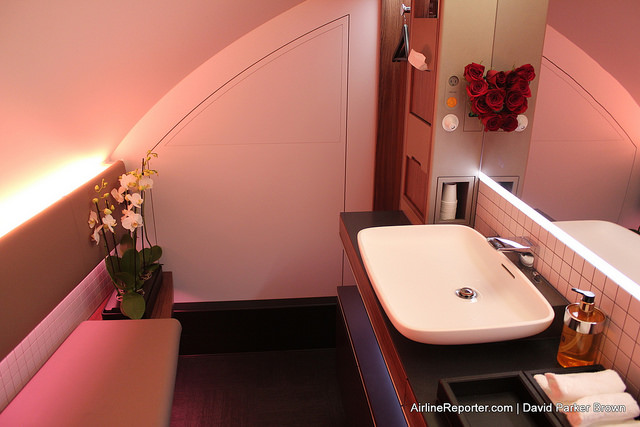
A first class lavatory on a Qatar A380. Although helpful, it wouldn’t make financial sense for restrooms to be this large.
On this particular flight to San Antonio, we deliberately chose our seats at the rear of the aircraft so that Deborah’s aisle seat would be directly opposite a lavatory. She needs me or another caregiver to do transfers, but with less than 25 inches between sink and the opposite wall, even though we are both slender, there is not enough space to trade places. So, with the toilet located at the back of the lavatory, I had to move Deborah in backwards. With my arms wrapped under hers as I ’œeased’ her in, the narrow entrance crimped her elbows inward until her arm bone cracked just below her shoulder. How quickly our lovely vacation came to an abrupt halt.
Interestingly, years ago we would always choose the lavatory that was NOT marked with the blue ’œwheelchair accessible’ logo because by not having grab bars, there was an extra two inches in which to trade places inside. People who are not independent and rely on a personal assistant to aid with transfers generally don’t make use of grab bars. It seems that now all lavatories have them, and though often advantageous, there are times when, without protruding grab bars, the extra two inches could be put to better use, as in the case of two people dancing around the narrow confines of what feels like a shoe box. Sometimes I think grab bars merely serve as an excuse for an airline to put wheelchair stickers on lavatory doors and make it appear that they are complying with disability laws.
So why aren’t aircraft lavatories accessible? Hasn’t the Americans with Disabilities Act (ADA) required aircraft to be accessible for years? Passed by Congress in 1990, the ADA has been highly successful at improving access in public facilities as well as privately-owned buildings that serve the public. It’s the reason why airports are accessible to the disabled, not only in the United States, but around the world. But the ADA does not apply to aircraft.
Airplanes are regulated by earlier congressional legislation called the Air Carrier Access Act (ACAA) that was passed in 1986. The ACAA created a statutory prohibition against discrimination on the basis of disability in air travel. When the ADA was passed four years later, it was felt the complex aircraft accessibility issues should be covered by rules soon to be issued by the U.S. Department of Transportation (USDOT).
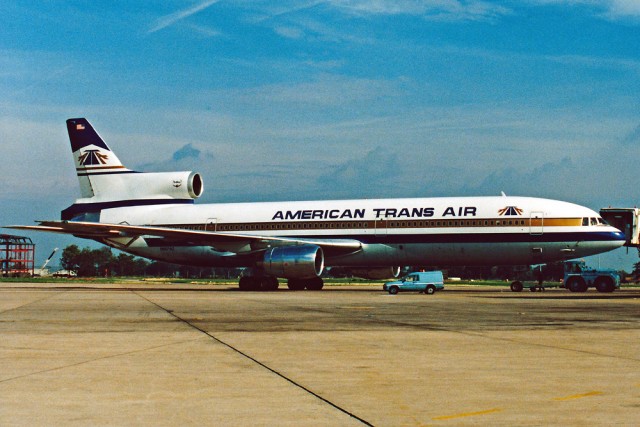
An ATA American Trans L1011 Tristar 50 – Photo: Ken Fielding
The rules to implement the ACAA first took effect in 1992. Accommodations for disabled persons were covered for things such as ticketing, moving about the airport, boarding and deplaning, and a host of other items. However, in 1992, the rules requiring aircraft to be equipped with at least one accessible lavatory were only applied to double-aisle, wide-body aircraft. It was felt that accessible lavatories were most important for long coast-to-coast routes that were handled (at the time) by the double-aisle heavyweights such as 747s, 767s, DC10s, and L1011s.
The USDOT postponed applying rules for accessible lavatories to single-aisle aircraft. It was argued that structural problems for the rear engine planes that were common at the time (727s, MD80s, DC9s, etc.) might pose undue problems for the airlines. Plus, those smaller planes were only being used for short flights anyway. With a little planning, so the thinking went, those with disabilities could avoid the need to use a lavatory on short flights.
Things are a lot different today. Single-aisle aircraft such as Boeing 737s and Airbus A320s now fly most of the routes within the United States. As it has for the past 25 years, the USDOT still ’œencourages’, but doesn’t require, airlines to place accessible lavatories on all their aircraft. Aircraft are now doing six-hour flights with inaccessible lavatories. And remember, wheelchair passengers are first-on/last-off, making any flight almost an hour longer than for everyone else.
One carrier that flies Airbus 320s, JetBlue, has forward lavatories with doors large enough for an aisle chair to nose in. It’s a small step in the right direction. However, those lavatories with the ’œACAA-compatible doors’ are still only 1/2 inch wider inside than the ’œstandard’ aft lavatories. The ’œextra space’ still doesn’t provide sufficient room for an attendant.
In the battle for use of precious real estate aboard aircraft, priority seems to be given to allocate space for extra seats. Rather than opting for accessibility, lavatories are actually shrinking. Remember that the term ’œaccessible’ has a wide variety of interpretations, especially where on-board lavatories are concerned.
’œThe ACAA has reduced barriers for people living with disabilities. Many people with disabilities, however, continue to face challenges when traveling by airincluding access to restroom facilities that meet their needs on flights,” the National MS Society told AirlineReporter. “Current lavatory designs are difficult to use, especially when relying on the aircraft’s aisle chair or being assisted by a family member or caregiver. For some these obstacles are so severe that they simply stop traveling by air. This is not only too bad for people living with disabilities, but it is too bad for an often financially challenged airline industry as there are 56.7 million people today who are living with one or more disability. The Society supports efforts to further clarify the law and make progress in increasing accessibility of airline travel for people with disabilities, including MS.’
If creature comforts were more readily available to able-bodied and disabled people alike, air travel would certainly increase. For sure, my wife should not have had to endure a broken arm just because nature called and the lavatory door was not sufficiently wide. Air travel is an essential form of transportation for both work and leisure ’“ for everyone!
Boeing explained to AirlineReporter, ’œMany of our airplane models have options that the airlines select for lavatories that are large enough, or are convertible to allow assisted transfer between a wheelchair and the toilet. As every airplane feature trades space for passenger and crew needs and each airline specifies their interior to meet their requirements, we continue to work with airlines to prioritize these types of features.’ In other words, Boeing is ready to put accessible lavatories on any of its aircraft, but it’s each airline’s choice as to what they order.
Prototypes for fully accessible lavatories have been designed for all commercial wide-body aircraft and for single-aisle planes such as the Boeing 737 and Airbus 320 families of jets. However, very few carriers are electing to install these good, fully accessible options when ordering new or refurbishing old aircraft. Improvements to help disabled travelers will require revised rules that apply to all aircraft of significant size. But first, existing rules that apply to wide-body aircraft need to be tightened. All too often, the problems that disabled people confront on single-aisle aircraft are also found on large aircraft. The success (or lack thereof) of the ACAA on providing accessibility on twin-aisle aircraft will be something that will hopefully improve in the future.
This story was written by Malcolm Cumming with help from Lorraine Woods (NMSS Volunteer) for AirlineReporter
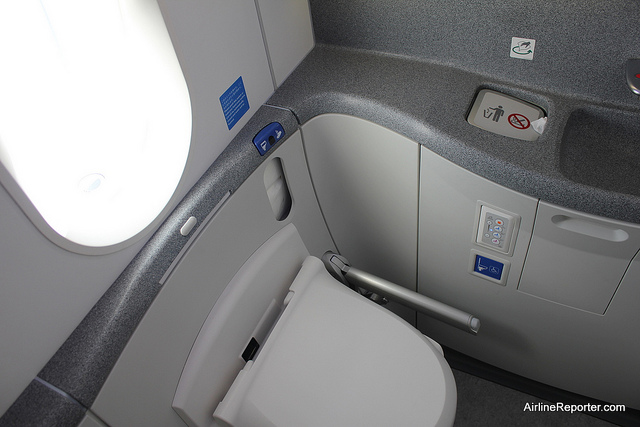
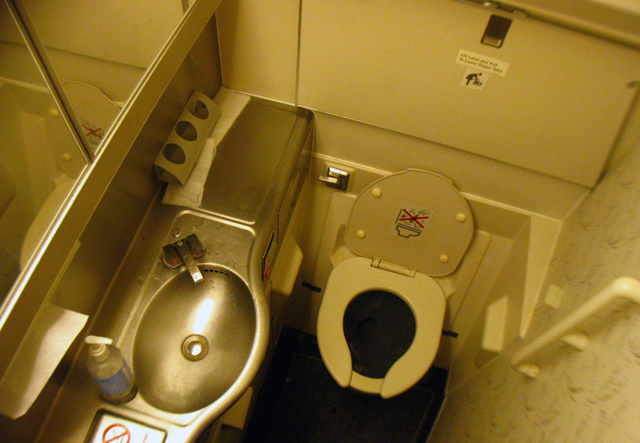
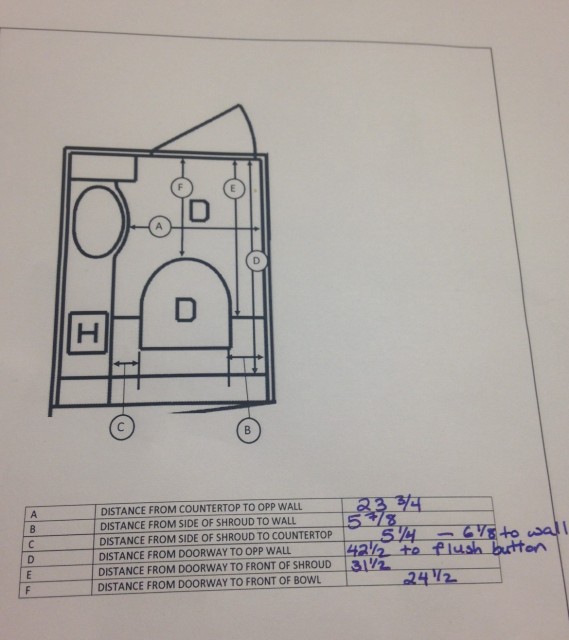
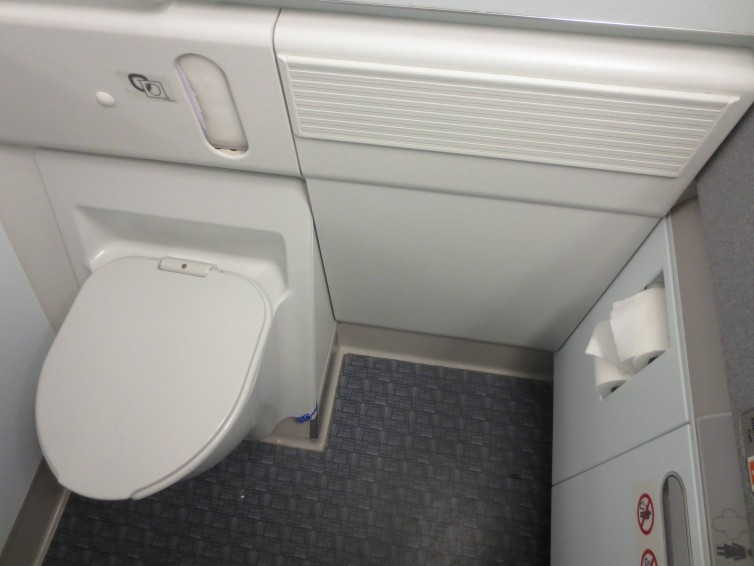
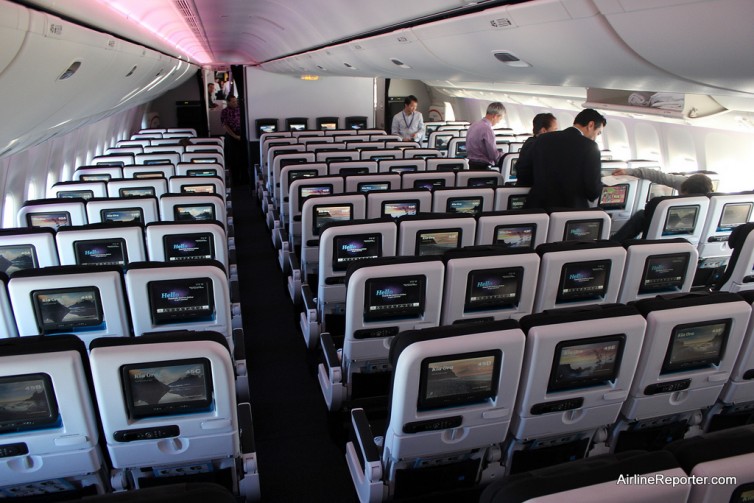
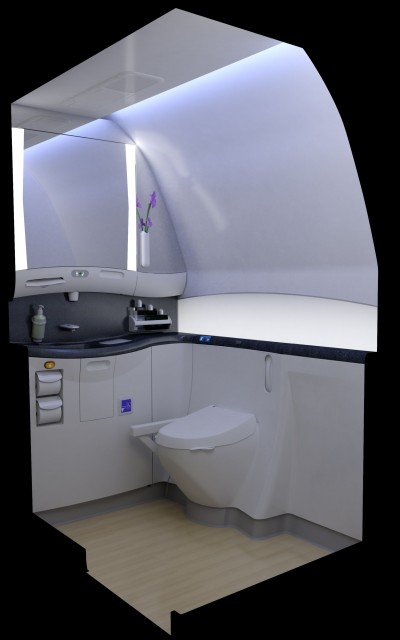
This is the reason my in-laws stopped traveling. My mother in law has Parkinson’s and the hassle of dealing with aircraft lav’s has become too much of a barrier for her. It’s sad because they used to go to the Caribbean every year and really enjoyed it, but they aren’t able to go anymore as most service to the Caribbean from Canada is with 737’s in high-density layouts.
Unfortunately, I think lawyers will have to get involved before the airlines do the right thing. If the current lavatories are bad enough, I cannot imagine how awful the new proposed lavs for the high-density narrowbodies will be.
Thank you for this. I’m so tired of airplanes and hotels w/ wheelchair symbols on restroom doors and no real accessibility. I’ll keep saying and teaching it in the hospitality industry until we can get it right.
My wife is also not able to walk on her own and I have also found that aircraft lavs are not adequate. My wife can walk a short distance with my help but even then getting her into the lav safely is more work than it should be. I also have to have my wife back in while I hold her. I have to help her remove her pants and help her sit down. I have not been on an aircraft where I can do that and have enough room to shut the door for privacy. So, I close the door as much as I can, sit her down and step out. When she is done she will call, I will go in and clean and I will reverse the process of pulling up her pants with the door not fully shut. This is not acceptable! Airlines should be required to meet full ADA standards on all aircraft types. Luckily my wife can take some steps but I can’t imagine what a fully wheelchair bound person would do.
Thank you for writing this article. Very informative! This is a subject that often gets ignored, and it definitely needs to be talked about. I sincerely hope that if enough people contribute to the conversation about airline accessibility, the airlines won’t be able to ignore it any longer. If one major player steps up their game, the others will have to follow!
I am a caregiver for a disabled woman, who often needs 2 people to help her go to the bathroom. The lack of privacy is excruciatingly humiliating for her. The untrained flight attendants also cause more attention to her because they are not trained on how to help, or use the equiptment properly.It’s hard to try to be discrete when all of the flight attendants are in a panic over the situation.
Adding more insults, UA is removing moving walkways at ORD. So anyone with some mobility but not enough will have impossible times changing terminals. UA already fails at contracting wheelchair & cart service for ppl with disabilities. Now this. I have to work and do my best but these obstacles for travel (which I have to do for work) are heartbreaking and maddening. http://www.chicagotribune.com/news/columnists/ct-ohare-united-moving-walkway-getting-around-met-0921-20150920-column.html
As one of the subjects of the preceding article, I am heartened by the comments and hope this starts a “disabled lives matter” movement.
Hi ,
Airbus launched the spaceflex concept lav on the A320 family that helps offer more room for people with disabilities. It also does so by not reducing the seat count but rather increasing it. This seems to be an innovative win-win situation for the passengers as well as the airline.
http://videos.airbus.com/video/e4d6779706as.html
The Spaceflex design is very innovative. It’s one of three ways to provide an aisle chair accessible lavatory on an aircraft. An accessible lavatory can be created by adding about 1.5′ to the width so that the aisle chair can be located next to the toilet (to allow a lateral transfer). The other two ways are to design movable wall panels so that one lavatory can “borrow” space from outside. Temporary space can be borrowed from another lavatory (as in the Spaceflex) or from unused space (during flight) near the rear exit. The downside of combining 2 lavatories into one (accessible) lavatory is that the two lavatories are off-line while being used by the disabled person. This becomes a real problem when the seating layout is “high-density” (I love the term). In trying to sell airlines on the Spaceflex solution, Airbus is promoting the idea that there will be no loss of seats, and there is even a possibility of adding six more! You’ll notice tha Airbus is eliminating space in the galley for storage of food-service carts. But promoting high-density seating while promoting accessibility is counter productive.
Let us also require that every electric wheelchair has an option to lay into a full flat position so that they can fit upright thru a cargo door on single aisle aircraft without having to lay them on their side. This will go a long way to prevent damage to the wheelchair and make it easier on the airline employee to handle these important items.
Hola, muy buen artàculo, que bien que alguien defiende a los que no pueden defenderse, a los que sufren en silencio junto con sus familiares este tipo de discriminación , claro ahora entiendo porque se ven tan pocos pasageros con discapacidades en los viajes areos. Les deseo suerte en esta batalla silenciosa. !Hasta la vista!
At http://www.wheelchairjimmy.com we are trying enlist more people to put increased pressure on U.S. airlines to purchase new aircraft and retrofit existing aircraft to accommodate wheelchair-bound travelers. Boeing and Airbus both have designed wheelchair accessible lavatories for their wide body aircraft but, as noted in Mr. Cumming’s excellent article, there are few buyers since the airline industry is focused on cramming more passengers into narrower seats with reduced legroom in order to increase profits at the expense of passenger comfort. Ironically, United Airlines and the Department of Transportation, among others, have told us that they have received virtually no complaints about inaccessible lavatories from people with reduced mobility. Please visit our website and make your feelings known. Only through a concerted effort by the thousands of disabled air travelers will change come about.
I’m not surprised the USDOT and United Airlines claim they have received few complaints about inaccessible lavatories. I have an internal memo from within DOT that claims they are satisfied with their language stating that an accessible lavatory “…shall permit a qualified individual with a disability to enter, maneuver within as necessary to use all lavatory facilities, and leave, by means of the aircraft”s on-board wheelchair.” As I wrote, the word maneuver is not defined in the ACAA and has been interpreted as “nose in past the door frame” by the airline industry lawyers. Also the words “shall permit… to use all lavatory facilities…” is interpreted as “go ahead, feel free…”.
There are a few reasons why the claim of few complaints may have some truth. Spinal cord injuries are a significant cause of persons being completely unable to stand or walk. Often times, bladder functions are also affected and those persons use catheters. Having little or no need to use a lavatory, their complaints focus on more pressing issues such as damage to wheelchairs and inadequate aisle chairs. Other passengers with mobility problems may still be able to stand and take a few steps. They may grumble, but probably don’t bother to file formal complaints. For people with limited mobility (but still able to walk a few steps) their best strategy is to be seated within close proximity to a lavatory. Sitting close to the loo is better than putting up with the stress and humiliation of being strapped into an aisle chair. I have never seen a passenger placed in an on-board aisle chair during a flight other than my wife.
When someone who cannot independently stand or walk finds they are unable to use a standard 1-aisle airplane lavatory, they might file a formal complaint. However, the DOT will dismiss their complaint by saying that the 1-aisle aircraft is not required to have an “accessible” lavatory. I suspect that dismissed complaints are not counted as “legitimate” complaints and are the basis of the response you received stating they have received virtually no [valid] complaints about inaccessible lavatories. When I filed a complaint about my wife’s broken arm, the USDOT tried to put the blame on me for the accident and dismissed my complaint by responding to the question “Has the airline failed to comply with the ACAA?” with the following thoughtful consideration: “No”. If you have the idea that the USDOT is captive to the airline industry and is not consumer oriented, my thoughtful consideration is “Yes”!
My wife and I live in Hawaii with family on the West Coast. My wife had a spinal cord infarction several years ago that left her with little use of her legs. She cannot stand and needs an accessible lavatory in order to fly the six hours to the West Coast. We’ve been flying Hawaiian Airlines because of their wide body fleet and wonderful flight attendants. It seems all other airlines flying this route are now using single isle planes, without accessible lavatories. Apparently, Hawaiian will join them in using single isle planes when they start to receive new aircraft in about two years. We will be forced to move to the mainland if there are no flights with accessible lavatory!!! Our immediate problem is that Hawaiian pilots are threatening a strike this spring/summer. We’re planning an Alaskan cruise out of Seattle and don’t wan’t to get stranded here if Hawaiian is on strike. Anyone know of another carrier that flies wide-body aircraft to and from Hawaii or that flies single isle planes with accessible lavatories?
Deborah and I share your predicament when it comes to West Coast to Hawaiian flights. Hawaiian is the only airline that still flies wide-bodies between the mainland and Hawaii. Their old B767s were better than the newer A330s that have replaced them. As for Hawaiian’s plans to start flying 1-aislers in a couple years, my request is that you speak up about it as I am. Contact Hawaiian Airlines Customer Representatives and tell them about your situation. Also contact your Senators and Congressional Representative and tell them you want the US Dept of Transportation to include a requirement for “Real” accessible lavatories on new and retrofitted single-aisle airplanes. Have your West Coast family members contact their Senators and Representative(s). Congress needs to hear your story.
Please make sure your cruise ship will suit your needs. New ships have ADA cabins with roll-in showers. Be aware that a cruise that visits ports without a dock (tenders are used to get ashore) will leave you stuck on-board at that port-of-call. Check out http://www.wheelchairtraveling.com, http://www.wheelchairtravel.org and http://www.wheelchairjimmy.com for info and suggestions about cruise ships.
A crazy alternative, but one that could work for us in the future, would be to fly between Hawaii and the mainland by way of Asia with Singapore Airlines or ANA . Their accessible lavatories are good. They are reported to be much better than those you’ll find on Delta, United and American. The US airline wide-body “accessible lavatories” are basically small standard lavs with marginally larger doors (no room for an attendant).
One very easily managed and low cost improvement would be to raise the height of the toilets to be ADA compliant. For those of us with arthritic knees, this is a necessity. Grab bars on either side of the toilet would also be extremely useful.
Good points. In any number of ways, the ACAA should be updated to reflect the same standards and goals as the far more successful ADA!
http://www.usatoday.com/story/news/2016/09/20/disabled-travelers-aviation-dot-regulations/90418756/
Thanks for posting the link to the USA Today article. The DOT’s ACCESS committee is looking into three areas where new ACAA rules could help improve air travel for persons with disabilities. Work groups have been assessing whether single-aisle, narrow-body aircraft (finally after 30 years) should be required to provide lavatories that can be used by passengers with mobility problems and disabled passengers who are not-mobile. ACCESS is also looking into disability-friendly IFE systems and new rules regarding service animals.
The article points out that airlines are resisting change. As they have for 30 years, they have presented over-inflated “costs” to fight off attempts to improve lavatories for obese, elderly and disabled passengers. They claim they will lose $33 Billion if forced to remove 3-6 seats from every flight served by all narrow-body aircraft over the next 25 years. That suspect figure is based on the notion that every flight on every route (even short hops which will likely remain exempt) would be 100% fully booked! (Flights with a few empty seats won’t lose money if the plane is outfitted with a few less seats.)
Anyhow, global warming will force changes such that airlines will not be flying 10’s of thousands of B737s and A321s twenty-five years from now.
I campaigning here in the UK to urge Airlines to create a designated wheelchair space on an aircraft, both myself and the team in the USA ‘All Wheels Up’ are making significant inroads. Virgin Atlantic are hosting a symposium with a view to bring all the Airlines together to resolve the problem. I have the support of the UK Government, they will be putting pressure on Airlines to change, they have done very little since Air Travel becoame possible over 100 years ago. There have been many near fatalities when disabled people have been manhandled and made to seat in an airline chair not designed for their bodies, it may just take a fatality for this process to be implemented. I would rather not wait for that so pleasee follow my progress on Twitter @flyingdisabled – I will get there…Chris Wood
Hello Christopher, I am a full time wheelchair user too, but even if we get to the stage when we can stay in our own wheelchairs on a flight, airlines have to start adressing the toilet issue. I am surprised that Virgin are helping you with your campaign when they can’t even get their own house in order – their upper class seats are not accessible for disabled people, despite several design upgrades and their toilets are not accessible either. The best toilet I have used is American Airlines as I can get the on-board wheelchair in it completely – both with BA and Virgin I have to transfer in view of other passengers and then my husband closes the door – complete loss of dignity and it is not fair. Good luck with your campaign, but toilets need addressing big time and also the issue of access to premier class seats for disabled people – the first class seats get worse with every new design – you need to be an acrobat to try to transfer into one from the on-board wheelchair and yet we have to pay the same fare as everyone else.
Hi Ann,
We previously corresponded in comments about Flying on Bubbles Upper Class on a Virgin Atlantic Airbus A340-600. Would you be so kind to give me details about the American Airlines aircraft that you find has the best toilet – the one you can get the on-board wheelchair completely inside? What kind of aircraft was it – and A380, B777, etc. Also, did the floor layout allow for 90-degree, 45-degree and/or parallel transfers? Maybe you can take a few pictures on your next flight and write an article for Airline Reporter! If need be, you can email David Parker Brown directly, and he’ll pass along stuff to me. Accessibility on Aircraft doesn’t seem to be a high priority with the current occupant of the White House, but I’m still pulling together information and pushing for new design concepts off and on. For what it’s worth, the US DOT hosted workgroups to consider putting accessible lavatories on 1-aisle aircraft. They recommended that accessible lavatories be provided TWENTY (20) years from now!!!
Hello Malcolm -I think it is the 777 where I have been able to get all the way in with the on-board wheelchair. I have cut and pasted an extract from someone else on another site too…
‘The actual lavatory is the standard aircraft lavatory except that the door swings “out” and not “in” and in doing so creates the interior space about 40% larger, and becomes big enough for an occupied aisle chair to fit inside… It’s not spacious by any means, but it will fit the aisle chair (and it’s designed like that).
I am trying to remember how I transferred – the cubicle was a wide one with the toilet at the side and my husband twisted the chair to 90 degrees and I transferred from the front of the on board wheelchair, which is how I transfer anyway.
I am looking to book a flight soon so I will take a photo for you. On the 380, two toilets open up into one huge one by a partition being removed, but you may remember from my Heathrow to Miami flight with BA the crew didn’t know it existed let alone how to take down the partition and I am reading about other situations like this – this is why the DOT sited that BA had violated the American Air Carrier Access Code.
I will be in touch after my flight
Ann
Hi Ann,
I hope you have a good flight. As long as you book on a 2-aisle wide-body plane (a Boeing 777 or 787 or Airbus 330, 350 or 380) you should be able to request the flight crew to get you to and from their ”most accessible” lavatory. Be aware that BA told me that their new A380 service from Vancouver Canada to Heathrow (YVR/LHR) DID NOT have any accessible lavatories except for the extra large lavatories (not specifically designed to be accessible) that are located forward in the Club Class section of the upper deck. I was told we”d have to book two $1,500 seats in Club if we wanted an “accessible” lavatory. I looked at pictures, and although the Club lavs were spaceous, the toilet was tucked way back in an unaccessible location.) Even if you”re booking on the very large A380 (of any airline), it”s not necessarily true you”ll have accessibility, especially in economy. The U.S. ACAA ”requires” foreign carriers to have ”accessible” lavatories, but it seems that the vague rules are not being enforced with much vigor (especially these days).
It”s a good idea to talk to the airline”s disability customer service people ahead of time and request that your seat be near the one they designate as accessible. The level of accessibility will vary not only by airline but by actual aircraft. A lot of planes are now being equipped with ”combo-lavatories”. That”s where they place two regular tiny lavatories side by side and make provision for the dividing wall to swing aside so as to create a single ”two-holer”. When joined, the combo lavatory provides a length of floor-space in front of the two toilets so you can use one and your attendant (your husband) can stand in front of the other toilet. These combo lavatories work somewhat OK. We used them a few times on Hawaiian Airline A330 flights to Maui (SEA/OGG). The down-side is that two lavatories are rendered ”out of commission” for the rest of the passengers while you and crew deal with all the aisle-chair maneuvering and transfer logistics. Don”t worry about that, it”s the airlines fault for opting for the combo solution instead of providing one adequately-sized lavatory.
If your plane doesn”t have a combo lavatory, the important consideration is whether or not there is enough room at the side of the toilet to allow your aisle-chair to be maneuvered to the side to allow you to transfer. In many cases, airline ”accessible” lavatories lack the extra space that”s needed for someone to assist (if assistance is needed).
I know of the comment that you cut n pasted: it comes from a post in Trip Advisor in response to someone asking a question about flying to Tokyo on American Airlines. The comment came from a so-called ”travel expert” who didn”t have a clue of what they were talking about. (A door that opens outward doesn”t add 40% more interior space.) There”s a lot more to an accessible lavatory than just providing a door that opens out.
Thanks for keeping in touch and I look forward to hearing both the good (and hopefully not too much of the bad?) about your upcoming trip.
– Malcolm
Hi Ann and Malcom,
I have been reading your comments regarding toilets on aircraft with great interest. Ultimately every airline is different, if you think its erratic in the USA then I can assure the same can be said globally. All I am doing is trying to eradicate indignity for those people who simply can”t leave their wheelchair, those who typically due to their condition have some other way to alleviate bowl or bladder without the need to utilise an onboard toilet. So, you may be saying that does not help me” and you would be quite right, nevertheless if I can get to the point with creators and innovators in airlines where this is solved for both the disabled community and the industry then a natural progression will be toileting and many other things to create accessible air travel. I would suggest you keep hammering away at those in the states that can change this such as government and Airlines, mostly they don”t reply or it”s a dead end, but occasionally something great happens. I take the view that whilst this may not happen straight away, then the next generation will benefit, just as we are reaping the rewards of the generation before us that hammered on doors and annoyed government in so many areas of disablilty. Chris
Hi Chris – I am British and live in the UK by the way – I travel to the States for my holidays and sadly have seen very little progress on equality for disabled people in airline travel over the years. I find it really difficult to transfer too and have banged myself trying to get onto aircraft toilets causing pressure sores that last for months- as you probably know. Certainly for short haul flights I would love to stay in my wheelchair – it is part of me and I only feel freedom on a flight when I get it back to me on landing. However, for the long haul flights where you need to sleep I would find it really uncomfortable to stay in my wheelchair for so long. We fly first or business class because of the beds so I can lie down and prevent pressure sores. My worst experience in flying though was upper class in Virgin where you have to get off the seat to make it into a bed???? Very difficult for someone who cannot walk or stand at all and even worse because of the poor seat design too, as they are so difficult to get in and out of. Even after new designs it is still this way so this is why I was surprised that Virgin were helping you, when they are not addressing some simple design failures in their seats. Good luck with your campaign and if you do come across Richard Branson please let him know my concerns about his upper class seats – I have told him, but many years ago and still no change.
Hi Ann, Apologies, I didn”t realise you are in the UK. Air Travel is indeed rubbish and there is scant regard for the disabled traveller once in the cabin. Here is my email address ch********@fl************.uk. It would be nice to meet for a coffee if we are not far from each other (I am just outside London) as it would be nice to hear you thoughts, or even a chat on the phone — if you feel it would be useful. I am very keen to get as many views as I possibly can as I progress with this. Chris
Thanks Malcolm – some great tips – the toilets I used on AA did feel like 40% bigger to me given that I could get in and close the door for the first ever in flying. I don’t think BA were telling you correctly about the ‘accessible toilets’ and you certainly shouldn’t have to pay club class to get an accessible toilet and in my experience they are no bigger in Club or first class by the way. I’ll post some photos anyway – actually it would be so great if lots of us could take some photos of aircraft toilets so we can see for ourself if we’d manage. Keep in touch
Ann
Yeah, pictures are what’s needed most. Absolutely!! Far too many AvGeeks only take pictures of their food trays. 🙁
I have recently flown with Qatar A/L Sydney / Doha / Barcelona and returned Athens / Doha / Melbourne Business Class , I found the Toilets to be so small I will not fly Qatar again ………
In recent years, the ME carriers, including Qatar, were among the better airlines for providing somewhat accessible Lavs, especially in 1st & Business. The US has led the way in reducing accessibility on aircraft. Maybe it’s carrying over to other carriers?
I have the help of the UK Government, they will put weight on Airlines to transform, they have done next to no since Air Travel becomes conceivable more than 100 years back. There have been many close to fatalities when debilitated individuals have been mauled and made to situate in an aircraft seat not intended for their bodies, it might simply take a casualty for this procedure to be executed.